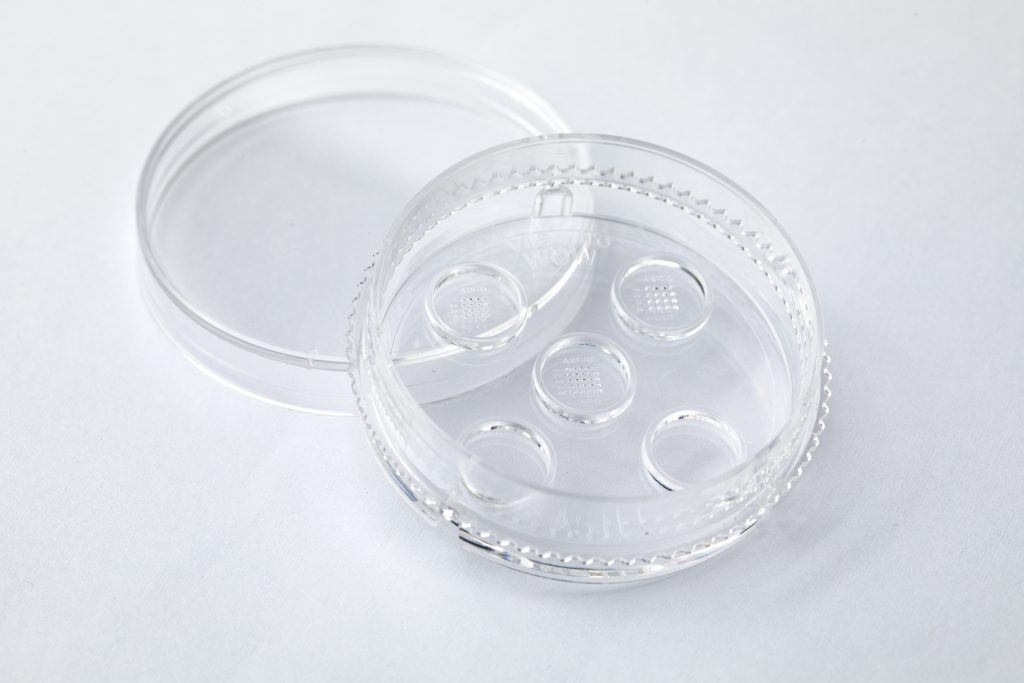Although everything around us happens in three dimensions, we, humans prefer to re-create the world in two dimensions. It may have started with the first cave paintings, continued with the Egyptian papyrus rolls, then frescos, mosaics, paintings and codices of the Middle Age. Photography, cinema, television, computer screens, cellphone displays – our virtual world was two-dimensional and remained so up till today. Sculptures and architecture may be exceptions, but culture, education, science is almost entirely based on flat surfaces. Sporadic attempts to re-create the third dimension – at least for entertainment - fail again and again. Technically possible, but people are not interested.
The same approach is dominating in our laboratory. We see oocytes and embryos in two dimensions even under our "stereo"microscopes; we imagine them in two dimensions and provide them two-dimensional environment. Softwares and graphics offering three-dimensional look and analysis are available but used mostly for illustrations – or AI-based analysis. Our own intelligence does not seem to be sufficient.
For most purposes, the two dimensions are enough. However, when we talk about embryo culture,
we may need to consider other options, too. Please never forget: what is good for the embryologist, isn't necessarily good for the embryos. And in our lab, they are the most important living beings.
Curiously, the idea to create a small impression on the bottom of the dish for individual embryo culture has slipped the notice of embryologists for long. With the introduction of zona-free nuclear transfer techniques, this approach was tested with the sole purpose of keeping blastomeres of pre-compacted bovine embryos together. Microwells were initially prepared in four-well dishes (hence the name: Well of the Well or WOW) with commercially available metal rods and mechanical pressure. WOWs have successfully compensated for the lack of both the zona pellucida and the group effect by preventing the disassembly of pre-compacted embryos and maintaining high in vitro and in vivo developmental competence, respectively.

Moreover, despite this rather primitive and drastic preparation procedure, the WOW system was found uniquely successful for other purposes, too, including the culture of zona-intact single embryos of various mammalian species. In general, the WOW successfully compensated the lack of communal culture effect, even when a single embryo was cultured in a large drop or well.
From the embryo's point of view, smaller seems to be better. A microwell diameter slightly larger than that of the zona pellucida appears to be sufficient for a single embryo. According to calculations of K. Matsuura (RFD , 2013), there is an approximately two- to three-fold difference in the concentration of small molecules and macromolecules inside the WOW, allowing the dilution of waste materials and the concentration of autocrine factors around the embryo.
However, this effect is only manifested in deep and narrow microwells. Those with large diameter and a flat bottom (i.e. those prepared for timelapse purposes) may offer optical advantages, but do not exploit the possibilities of microenvironment. Additionally, marked benefits of the WOWs can be only seen after single-medium, continuous culture to the blastocyst stage.
VitaVitro's new WOW dishes contain different microwell groups: some of them suitable for time-lapse investigation; others fully support embryo development. Embryologists may decide which one they want to use for their actual purpose. The special surface coats of dishes offer a unique practical benefit, as the air bubble formation – a typical inconvenient nuisance of ready-to-use microwell dishes – is almost completely eliminated.

References:
1. Vajta G, Peura TT, Holm P, Páldi A, Greve T, Trounson AO, et al. New method for culture of zona-included or zona-free embryos: The Well of the Well (WOW) system. Mol Reprod Dev. 2000;55:256–64.
2. Vajta G, Kőrösi T, Du Y, Nakata K, Ieda S, Kuwayama M, et al. The Well-of-the-Well system: an efficient approach to improve embryo development. Reprod Biomed Online. 2008;17:73–81.
3. Ieda S, Akai T, Sakaguchi Y, Shimamura S, Sugawara A, Kaneda M, et al. A microwell culture system that allows group culture and is compatible with human single media. J Assist Reprod Genet. 2018;35:1869–80.
4. Ikeda S, Sugimoto M, Kume S. Lipofection of siRNA into bovine 8-16-cell stage embryos using zona removal and the well-of-the-well culture system. J Reprod Dev. 2018;64:199–202.
5. Kelley RL, Gardner DK. In vitro culture of individual mouse preimplantation embryos: the role of embryo density, microwells, oxygen, timing and conditioned media. Reprod Biomed Online. 2017;34:441–54.
6. Matsuura K. Numerical calculations for diffusion effects in the well-of-the-well culture system for mammalian embryos. Reprod Fertil Dev. 2014;26:742–51.

